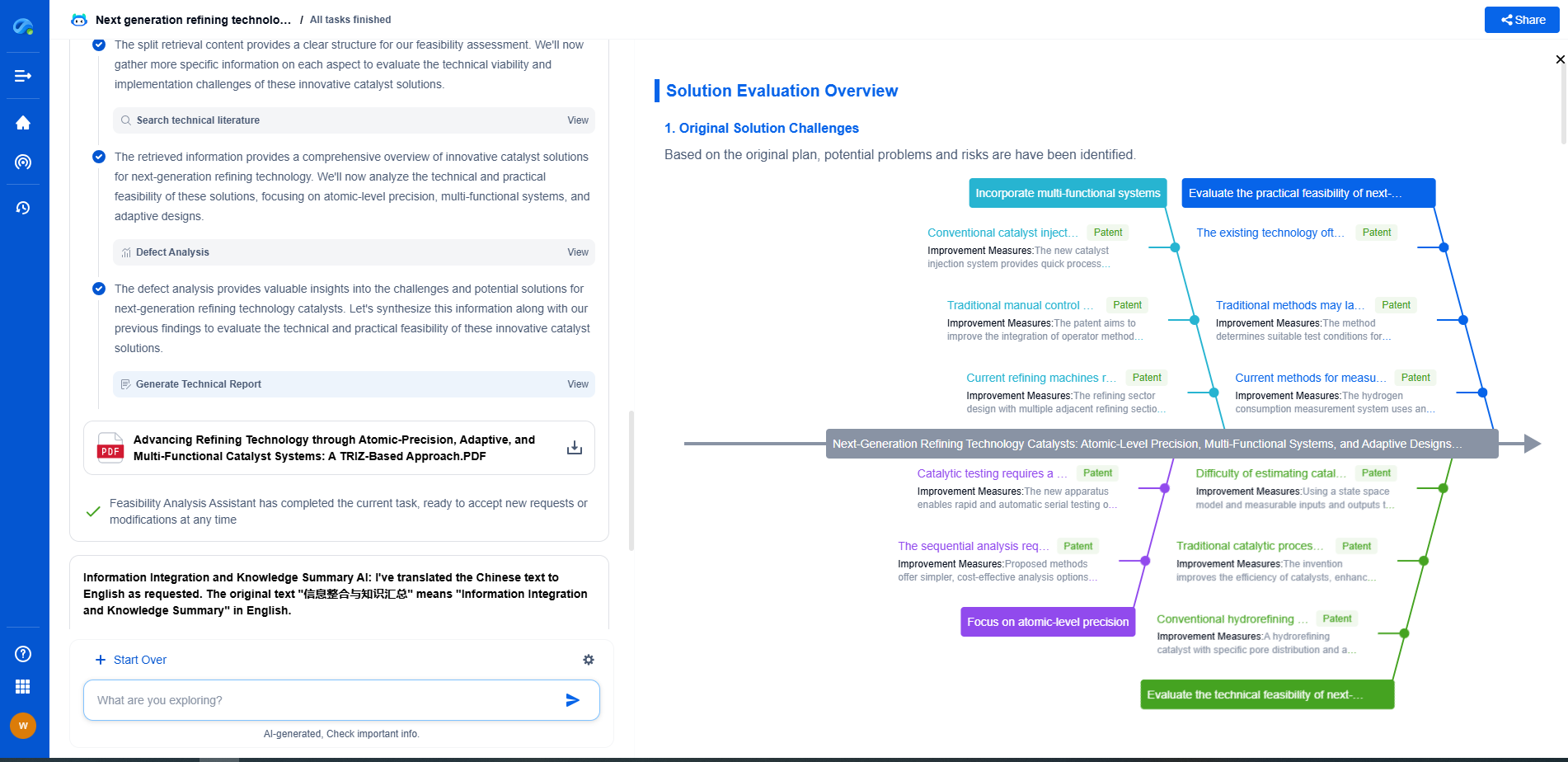How ±0.01mm Repeatability Enables Microchip Handling Robots
JUN 26, 2025 |
In the intricate world of semiconductor manufacturing, precision is paramount. Microchips, the tiny powerhouses of modern technology, demand meticulous handling to ensure their functionality and longevity. One crucial aspect of microchip production is the handling and placement of these components, often performed by specialized robots. These robots must achieve an extraordinary level of repeatability to maintain the quality and efficiency of the manufacturing process.
The Significance of ±0.01mm Repeatability
Repeatability is the robot's ability to consistently return to the same position across multiple cycles. In the context of microchip handling, achieving a repeatability of ±0.01mm is a game-changer. This precision ensures that each microchip is placed accurately, avoiding misalignments that can lead to defects or malfunctions. The margin for error in microchip production is incredibly slim, making ±0.01mm repeatability not just a desirable feature, but a necessity.
How Robots Achieve This Precision
To reach such high levels of repeatability, microchip handling robots utilize advanced technologies and engineering techniques. High-resolution encoders are often employed to provide precise feedback on the robot's position, enabling it to make necessary adjustments in real-time. Additionally, the mechanical components are meticulously designed and assembled to minimize any play or backlash, which could otherwise compromise precision.
Furthermore, the control algorithms used in these robots are highly sophisticated, capable of compensating for even the slightest deviations. These algorithms process data from various sensors, adjusting the robot's movements dynamically to maintain precision throughout the handling process.
Benefits of High Repeatability in Microchip Production
Achieving ±0.01mm repeatability offers numerous benefits in the realm of microchip production. Firstly, it significantly reduces the likelihood of defects, as each microchip is handled with extreme accuracy. This reduction in defects leads to increased yield, as fewer microchips are rejected due to misalignment or handling errors.
Moreover, high repeatability enhances the overall efficiency of the production line. With robots consistently performing at such precise levels, downtime due to adjustments or recalibrations is minimized. This continuity allows for faster production rates and reduces overall manufacturing costs.
Challenges and Solutions in Achieving High Repeatability
Despite the advancements in robotic technology, achieving and maintaining ±0.01mm repeatability presents certain challenges. External factors, such as temperature fluctuations and vibrations, can affect the robot's performance. To address these challenges, manufacturers implement environmental controls within production facilities, stabilizing conditions and minimizing variables that could impact precision.
Additionally, regular maintenance and calibration of robots are essential. By keeping the robots in optimal condition, manufacturers ensure that high repeatability is consistently achieved. Implementing a robust maintenance schedule and utilizing automated calibration tools can greatly support this effort.
The Future of Microchip Handling Robots
As technology continues to evolve, the demand for even smaller and more complex microchips will rise. This progression will further accentuate the need for precision in microchip handling. The development of even more advanced robotic systems, possibly integrating AI and machine learning, could push the boundaries of repeatability beyond current limits.
In conclusion, achieving ±0.01mm repeatability in microchip handling robots is a critical factor that underpins the efficiency, quality, and cost-effectiveness of semiconductor manufacturing. By understanding and overcoming the challenges involved, manufacturers can continue to meet the growing demands of the technology industry and drive innovation forward.
Ready to Redefine Your Robotics R&D Workflow?
Whether you're designing next-generation robotic arms, optimizing manipulator kinematics, or mining patent data for innovation insights, Patsnap Eureka, our cutting-edge AI assistant, is built for R&D and IP professionals in high-tech industries, is built to accelerate every step of your journey.
No more getting buried in thousands of documents or wasting time on repetitive technical analysis. Our AI Agent helps R&D and IP teams in high-tech enterprises save hundreds of hours, reduce risk of oversight, and move from concept to prototype faster than ever before.
👉 Experience how AI can revolutionize your robotics innovation cycle. Explore Patsnap Eureka today and see the difference.
- R&D
- Intellectual Property
- Life Sciences
- Materials
- Tech Scout
- Unparalleled Data Quality
- Higher Quality Content
- 60% Fewer Hallucinations
Browse by: Latest US Patents, China's latest patents, Technical Efficacy Thesaurus, Application Domain, Technology Topic, Popular Technical Reports.
© 2025 PatSnap. All rights reserved.Legal|Privacy policy|Modern Slavery Act Transparency Statement|Sitemap|About US| Contact US: help@patsnap.com

